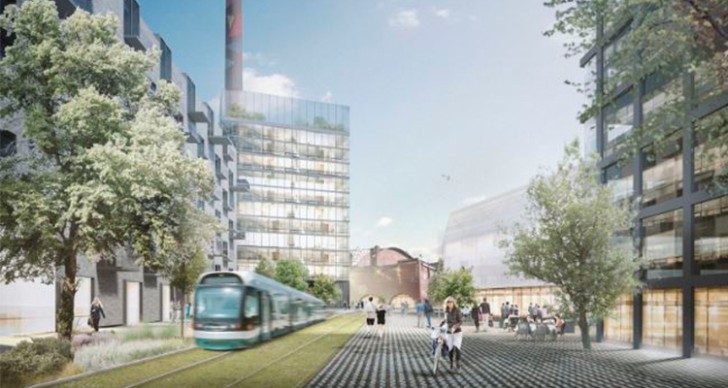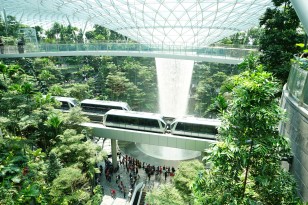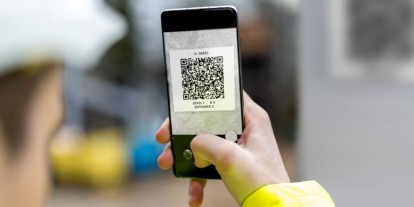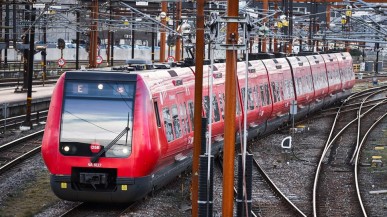Zigurat Global Institute of Technology
Blog / Disruptive Technologies
Smart City Series: Tampere Aspires to Be the Smartest of Them All
Categories

In today’s post, on our world tour of smart cities we disembark in Tampere, a city of approximately 235 000 inhabitants in Southern Finland, that has set an objective to offer all kinds of digital services by 2025, be a carbon-neutral city by 2030 and seeks to develop its own innovation ecosystem by promoting technological and sustainable development.
In order to achieve that Tampere region has built a network that allows city residents, companies and research institutions to pilot and develop smart city solutions. Smart Tampere is the strategic development program of the Finnish city for 2017-2021. And it builds on seven key aspects:
- Smart mobility
- Digitized and sustainable industry
- Education and research
- Smart buildings
- Smart infrastructure
- Smart governance
- Smart health system
 What all these areas of action have in common is the deployment of technologies such as artificial intelligence and data analysis (big data) for their development.
What all these areas of action have in common is the deployment of technologies such as artificial intelligence and data analysis (big data) for their development.
Smart City Tampere: Mobility
Tampere has realized that traffic and mobility are essential points for tomorrow’s cities. In its vision of sustainable mobility, Tampere wants to replace the current bus system to develop an integrated transport system with the tram as its main means. Its completion is planned for 2021. The central network of trams will connect with other environmentally friendly transport systems and link the other districts to the city center. The City of Tampere is also evaluating the benefits of electric buses by collecting data on electric and hybrid buses that operate the same lines. The idea is to find out how an electric bus actually behaves in winter conditions. The measurement of data and its analysis also enable fact-based decision-making on future material procurements. Data is collected on such aspects as the electricity consumption of the vehicles, charge times, kilometers driven and air temperatures. The city has also decided to contribute to the development of market-based charging network for electric vehicles. The plan is to draw up a contract template to allow the private sector to set up charging points on city-owned land.
Smart City Tampere: Digitized and Sustainable Industry
The Tampere region combines a long history as a center of industrial know-how and development with solid ICT expertise. After all, the telecommunications giant Nokia is from around here. There are various districts destined to become hubs of the smart industry. One of them is Hervanta, the district with the highest number of technology companies and emerging companies in the country. It houses the Technical University of Tampere and is the perfect place to promote the collaboration between industry and researchers. To boost Finnish exports and offer unique services for SMEs in the field of machinery and manufacturing, Smart Machines and Manufacturing Competence Centre (SMACC) has been founded. It is formed by VTT Technical Research Centre of Finland and Tampere University, the City and Council of Tampere have both supported the model. This center constitutes the necessary digital boost for the Finnish industry formulating a vision of the future needs of enterprises in the Tampere Region and in Finland, as well as in Europe and the world in general. https://www.youtube.com/watch?time_continue=8&v=Ei8OlEvVTCU
Smart City Tampere: Education and Research
As we have already mentioned above, one of the strengths of Smart Tampere is the combination of extensive research-based competence with contacts and feedback from all the sectors and industries from manufacturing to mobility. When it comes to education, Tampere has launched various smart initiatives worth mentioning, such as piloting talking robots in practicing maths as well as English and German in preschools and first years of primary education, testing Artificial Intelligence as a way to identify pupils in need of support or simply offering an application to support Finnish learners who are still waiting to be admitted to contact teaching.
Smart City Tampere: Smart Buildings and Smart Infrastructure
Tampere is the most populous inland city in the Nordic countries and its population is growing rapidly. New buildings and infrastructures are needed to accommodate these new residents and fulfill their needs. And Smart Tampere has set some ground rules for these new developments: they have to be eco-friendly, energy-efficient, and sustainable without decreasing people’s comfort and well-being. Smart Tampere includes districts like Hiedanranta whose aim is to turn into a neighborhood that produces more resources than it consumes. To achieve this end, a management platform has been deployed to encourage the development of solutions through public-private cooperation and the creation of an urban laboratory. In Viinikka district, an intelligent lighting management system is being developed that incorporates comprehensive fiber network that also allows the control of traffic lights and different sensors. Planned services also include applications to inform citizens of free parking spaces or the amount of thaw in the sanitation system. In the district of Ilokkaanpuisto the residents will have a photovoltaic power plant. Another interesting smart district is Isokuusi, which will become Finland's largest timber construction area, including wooden residential buildings, small single-family houses as well as public buildings. As it happens, since 2018 Tampere also hosts InfraBIM Open, the first conference in the world concentrating to open infrastructure BIM. BIM (Building Information Modeling) is a methodology that allows us to build smarter cities by integrating the mobility of information. As a result, our knowledge of assets is constantly increasing since the start of the project and throughout its lifecycle. This will benefit everyone in the long run as it makes constructing smart buildings and infrastructure more manageable.
Smart City Tampere: Smart Governance
The electronic services of Tampere are constantly expanding because a smart city is only genuinely smart if its residents’ everyday lives are fluent. In the framework of Smart Tampere program, agile experiments are used to find easy-to-use electronic services for Tampere residents. Those experiments have grown out of the residents' own request. In addition to electronic services, the city tries to offer its residents new ways to influence the development of their living environment and participate in the decision-making.
Smart City Tampere: Smart Health System
The research, development and innovation of health and well-being services are carried out from the Tays RDI-Center at Tampere University Hospital. The vision for the digitalization of well-being services in Tampere is to have everyone in the city primarily using digital services in 2025. The development of new services is based on the openness of digital solutions and the promotion of integration. The Tays RDI-Center also coordinates the work of a HealthHUB which brings together health companies, clinicians, researchers, developers, consumers and end users. Working together is a powerful resource that gives ideas a good chance to grow and develop. Commonality, openness and innovation are key principles of the HUB. The action is based on the needs of the community, so everyone can influence and participate in its work. https://www.youtube.com/watch?v=YYvCshhhHl8
Connectivity and Security
When building a smart city there are a few essential considerations. For example, whenever new technological solutions are used, safety aspects must always be present. Another important aspect, we could say that the foundation of every smart city, is the connectivity. In the case of Tampere, connectivities such as 5G, LoRa or X technologies, serve as key infrastructure and enablers for digitalization and the IoT. The aim of these connectivities is to link data produced by people and facilitate the decision-making processes by providing reliable information. One of the elements that makes the Smart Tampere project stand out is the conception of the smart development of the city as a whole. Connectivity brings it all together and makes possible to control different services from platforms, which makes Tampere, in turn, an innovation landmark and encourages economic development. All in all, Smart Tampere is an ambitious project that is set to pave and show the way to other smart city initiatives all over the world. 




